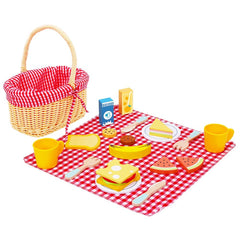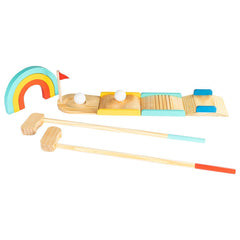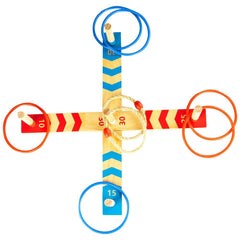Wooden dollhouses have always been a favourite among children. They are actually more than just a play item. Instead, they are a place where stories weave. This is why children love setting up the rooms of a kids’ dollhouse.
As they explore the dollhouse, they take on different roles, such as parents, siblings, or even guests. And these role-playing moments make them aware of family life and the emotions that are associated with it. From cooking in the kitchen to putting the dolls to bed, every activity turns into a new story.
In this blog, we’ll explore simple role-play games that children can enjoy using their miniature dollhouse. Let us begin by understanding why role play matters.
Why Role Play Matters
Role play helps children learn about the world around them. When they use a dollhouse for kids, they copy real-life situations like cooking, cleaning, or caring for family. And this activity helps them understand their daily lives and practice their routines.
It also builds social interactive skills by letting toddlers learn how to express, share with others, and take turns. Slowly, they grow more confident as they speak for their wooden dolls and create stories.
Playing with a kids’ dollhouse also supports brain development. Children demonstrate this by moving dollhouse furniture and planning stories with improved focus, memory, and language. So roleplay helps them think, imagine, and enjoy learning through play.
Now that we know why role-play is important, let us look at a few role-play ideas using our dollhouse for kids.
Role-Play Games to Try
Family Morning Routine
Children love to copy daily life, and the morning routine is a wonderful way to start. Using the wooden dolls and furniture inside the kid's doll house, your child can act out a full start to the day.
He can make the dolls wake up, brush their teeth, eat breakfast, and even get dressed for the day ahead. You can suggest little add-ons too, like watering the plants or feeding a pet. And as they follow these steps in order, children naturally learn how to sequence tasks and build a better sense of routine.
A Visit from Grandma
Add a new wooden doll and introduce her as Grandma, visiting the family for the weekend. Following this, children can role-play welcoming her, preparing dinner together, sharing stories, and getting a room ready for her stay.
This story builds emotional warmth as kids practice kindness, caring for, and including others. It also encourages conversations about family bonds and traditions.
Rainy Day Indoors
What happens when it rains and the dolls can’t go outside? That’s when creativity steps in.
In such a case, your child can imagine a rainy day spent indoors. He can make his dolls read books, bake cookies, watch a movie, or play games in the kids’ dollhouse. This scene encourages problem-solving as kids think about what to do when plans change.
Whether the dolls relax for a film night or bake in the kitchen, the play stays lively and full of ideas.
Get Well Soon
Some role-play ideas help children explore emotions gently, like this one. In this game, one is feeling unwell, and another doll plays the role of a parent or doctor. In this way, children can take care of the sick doll by offering rest, food, or pretend medicine. They can also set up a little space with the bedroom set or use the bathroom furniture as part of the care routine. You can even bring in dollhouse animals as visitors to cheer the doll up.
Through this play, kids learn how to show empathy and understand how to care for others.
Birthday Celebration
Every house needs a party now and then, and so does a kid's dollhouse. So let your child throw a birthday celebration inside the wooden dollhouse. Pick one doll as the birthday child and let the others attend. Then, your child can set up the kitchen for snacks and pretend cake or gather everyone in the living room for games and gifts. Add homemade paper hats or small decorations to make it more special.
This kind of role-play helps kids plan, organise, and take part in group play. It brings joy, teaches social rules, and fills the room with giggles and imagination.
Inside Our Dollhouses
Both come with lovely rooms, beautiful dollhouse furniture, and friendly wooden dolls to help children enjoy imaginative play.
The Kids' Doll House is ideal for small hands. It has 18 pieces, including furniture for the bedroom, kitchen, living room, and bathroom. Further, it has dolls to represent a wholesome family. This kids’ dollhouse is perfect for children who are aged 3 and above because it’s light and easy to carry.
For children who are ready for more space and variety, the Doll House for Kids is a wonderful next step. It also includes 18 pieces but offers a bigger layout and extra items like wooden animals. It also comes with movable furniture that lets children plan and create their own setups.
Final Thought
Wooden dollhouses spark imagination and emotional learning. From morning routines to birthday parties, each game lets children explore real-life moments through play. Whether it’s the small, easy-to-carry dollhouse or the spacious one with extra details, both offer rich opportunities for storytelling and learning.
Both of them aim to help children grow while they play. Hence, they encourage kindness, focus, and creativity with every small scene they set. Ultimately, it's not just about furniture and dolls—it's a child's way of understanding the world.
FAQs –
1. What age is best for a wooden dollhouse?
Barnshenn wooden dollhouses are best for children aged 3 and above. The size, pieces, and design are safe and simple for young children to use.
2. Is the dollhouse furniture movable?
Yes. Both the small and large Barnshenn dollhouses have movable furniture. Children can place and shift pieces during play.
3. Are the dolls included with the dollhouse for kids?
Yes. Both versions include family-themed wooden dolls, making storytelling more real and engaging.
4. Can boys play with a kids dollhouse too?
Of course. Dollhouses are for all children. Boys enjoy role play just as much and benefit from the same learning and fun.





